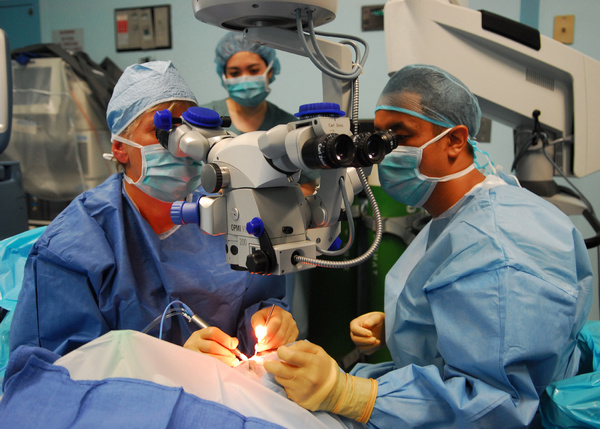|
a recent article from led professional outlined the approach that escatec of heerbrugg, switzerland took in solving the thermal management needs of leica microsystems for an led light source for leica’s new ophthalmic microscope proveo 8.

a case study was presented for cooling the led lights on an ophthalmic microscope. (wikimedia commons)
the case study was presented by wolfgang plank, head of the moems future laboratory and cleanroom, and gerd harder, key account manager.
as the article explains, in order to ensure the proper red reflex for the microscope, which is a critical feature for a clear view during ophthalmic procedures (such as cataracts surgery), a new illumination technology was created with four individual beams. this kept the red reflex consistent throughout the surgery.
initially, the new technology did not meet the thermal requirements of the system and escatec utilized a customized, high-resolution thermal simulation tool developed at the vienna university of technology to discover a solution.
the final solution was three high-powered led arranged tightly on a copper insulated metal substrate (ims). the thermal conductivity of the ims was 7.5 w/mk and the total power of the led assembly is 27 w. the hottest point of the assembly is in the middle where the led was assembled with chip on board (cob) technology and, according to the article, 6w of power needed to be dissipated.
“this could only be realized by means of suitable copper structures on the ims that have been simulated and optimized,” the article continued. “the ims is soldered on the cooling block. this metal interconnection was important for the thermal management and to assure that no oxidation of the interface or change of the thermal resistance occurs over the lifetime.”
two heat pipes were used to pull the heat away from the copper block to the fins. it was noted that the heat pipes were soldered to the copper block in order to ensure proper performance over the lifetime of the assembly.
it was added, “the ims design performance proved to be so good that the light source can be operated with 125% power without the leds reaching the maximum permissible junction temperature.”
read the full case study at https://www.led-professional.com/resources-1/articles/thermal-management-of-an-led-light-source-for-microscopes.
|